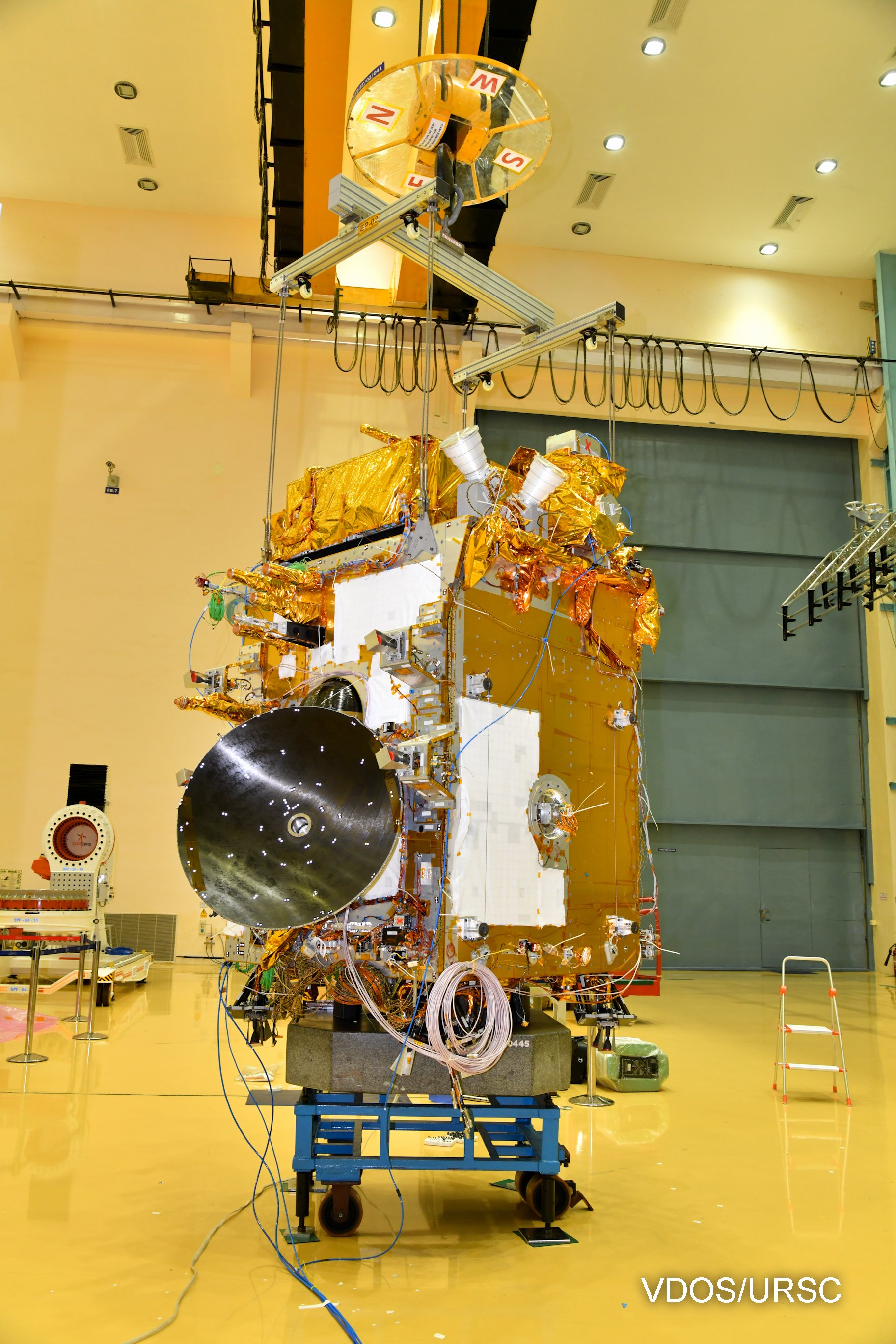ADITYA L1
1. Context
The Indian Space Research Organisation (Isro) released images of the Aditya-L1 mission — the space agency’s first attempt to study the Sun. Although the launch date of the mission has not been announced, the satellite has reached the Satish Dhawan Space Center (SDSC) in Sriharikota, Andhra Pradesh, for its integration with the launch vehicle, PSLV
Image Source: URSC
2. About Aditya L1
- Aditya L1 shall be the first space-based Indian mission to study the Sun.
- The spacecraft shall be placed in a halo orbit around the Lagrangian point 1 (L1) of the Sun-Earth system at a distance of about 1.5 million km from the Earth.
- A satellite placed in the halo orbit around the L1 point has the major advantage of continuously viewing the Sun without any occultation/eclipses.
- As the spacecraft will be directly placed in between the Sun and the earth, It will also provide crucial information in understanding the impact of solar activities on near-Earth space weather.

3. Objectives
- Understanding Coronal Heating and Solar Wind Acceleration.
- Understanding initiation of Coronal Mass Ejection (CME), flares and near-earth space weather.
- Coupling and Dynamics of the Solar Atmosphere.
- Solar wind distribution and temperature anisotropy.
4. Uniqueness
- First time spatially resolved solar disk in the NUV band.
- CME dynamics close to the disk ( ̴1.05 Run) and thereby providing information on the acceleration regime of CME which is not observed consistently.
- On-board intelligence to detect CMEs and Flares for optimized observations and data volume.
4. Importance of studying the sun
- Every planet, including Earth and the exoplanets beyond the Solar System, evolves and this evolution is governed by its parent star.
- The solar weather and environment, which is determined by the processes taking place inside and around the sun, affect the weather of the entire system.
- Variations in this weather can change the orbits of satellites or shorten their lives, interfere with or damage onboard electronics, and cause power blackouts and other disturbances on Earth.
- Knowledge of solar events is key to understanding space weather.
5. Importance for India
- Alongside another mission to the Moon, being planned for next year, and the first human space flight scheduled for 2022, the Indian Space Research Organisation (ISRO) is also preparing to send its first scientific expedition to study the Sun.
- Named Aditya-L1, the mission, expected to be launched early next year, will observe the Sun from a close distance, and try to obtain information about its atmosphere and magnetic field.
6. About Lagrange Point
- In simple words, the Lagrange point is an orbit type in the space between 2 bodies like the Sun and Earth, where the gravitational force of both the planets is balanced.
- And anything at these points is in a state of equilibrium.
- And for this reason, if you place any satellite or spacecraft at these points, you need very little fuel consumption to move this because the body is free from any repulsion and attraction force.
- That’s why you can also call it parking points of space.
7. Lagrange points of Earth and Sun:
|
Lagrange Points |
Distance from the Earth |
Stability |
Specifications |
|
L1 |
1.5 million km |
Unstable |
This Offers uninterrupted views of the Sun. |
|
L2 |
1.5 million km |
Unstable |
The ideal location to study deep space. |
|
L3 |
301.4 million km |
Unstable |
This is the Farthest lagrange point from the earth. |
|
L4 |
— |
Stable |
60° ahead of earth, Where earth was 2 months ago |
|
L5 |
— |
Stable |
60° behind of earth, Where earth will being 2 months time |
|
For Prelims: Lagrange Point, Sun Interiors, Aditya L1 Mission, PSLV, GSLV For Mains:1.Discuss the objectives and significance of the Aditya L1 mission. How does it contribute to our understanding of the Sun-Earth relationship and space weather? 2.Explain the technological challenges associated with sending a spacecraft to the Lagrange point L1 and orbiting the Sun. What are the benefits of placing a satellite at the L1 point? |
|
Previous Year Questions
1. Aditya L1 is a ----- (ISRO IPCR Assistant Mechanical 2016)
A. Long-range Missile
B. Spacecraft Project
C. Rocket to the moon
D.Light Combat Aircraft
Answer (B)
|





